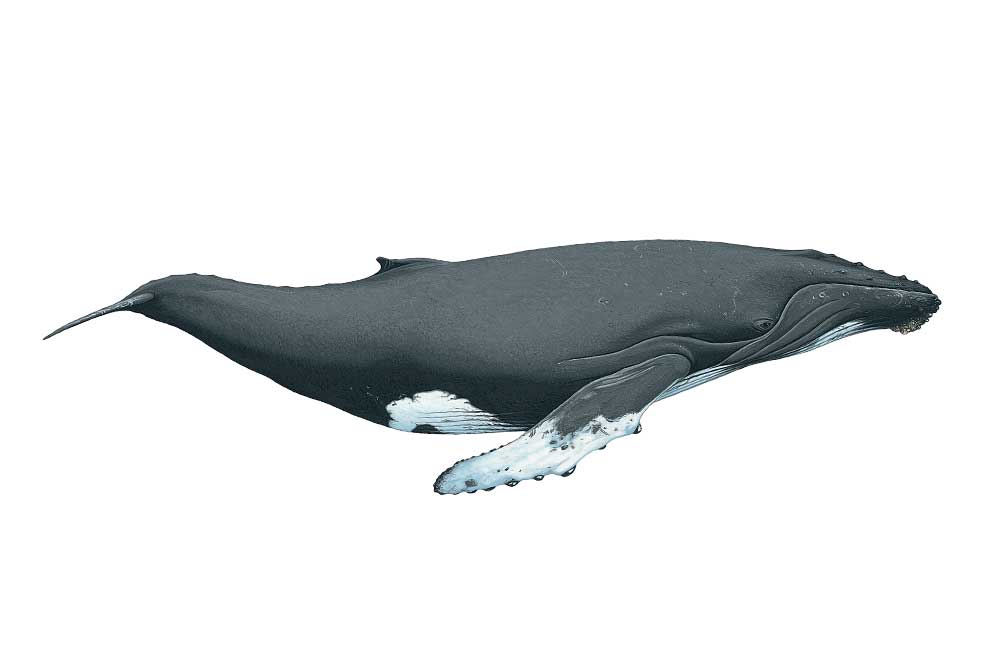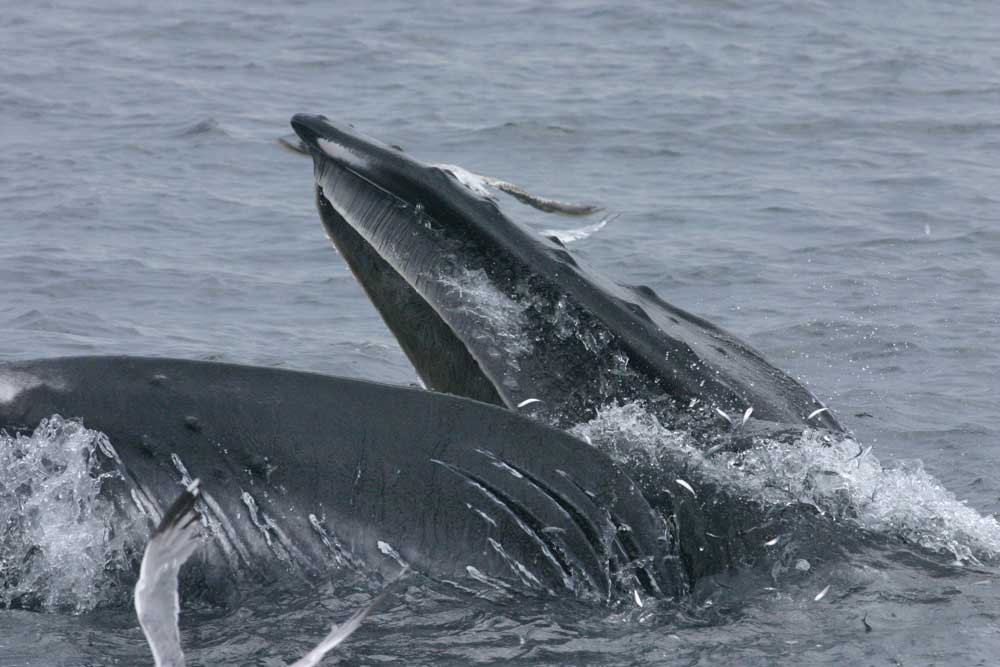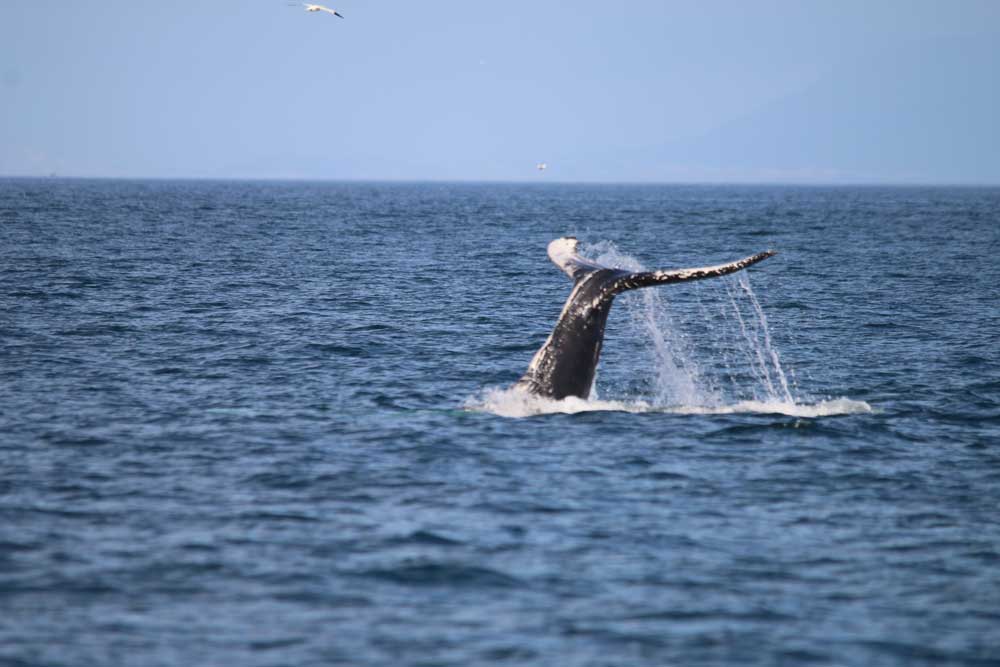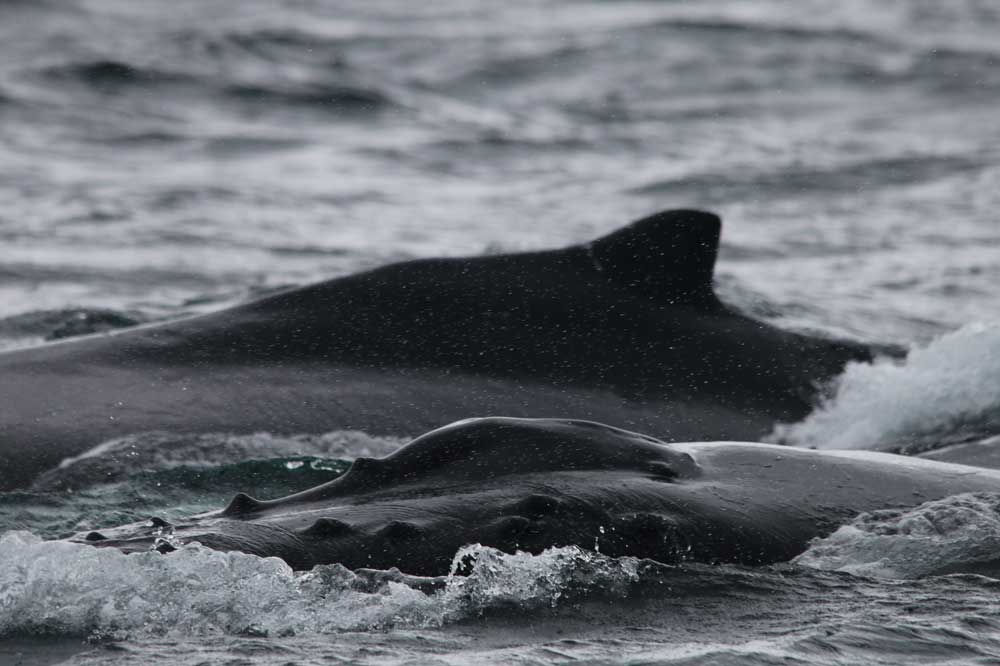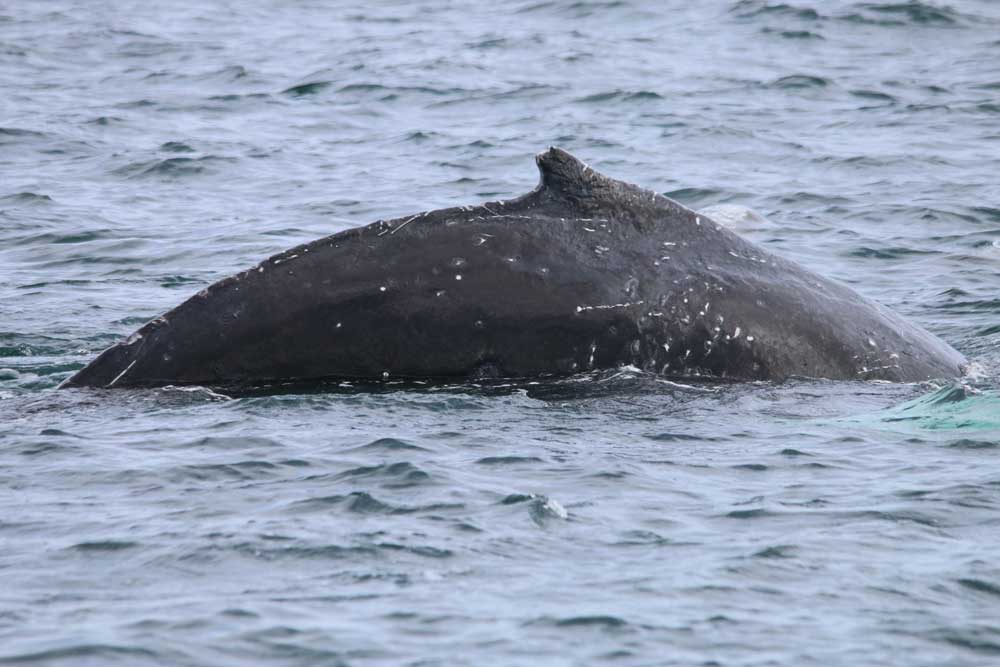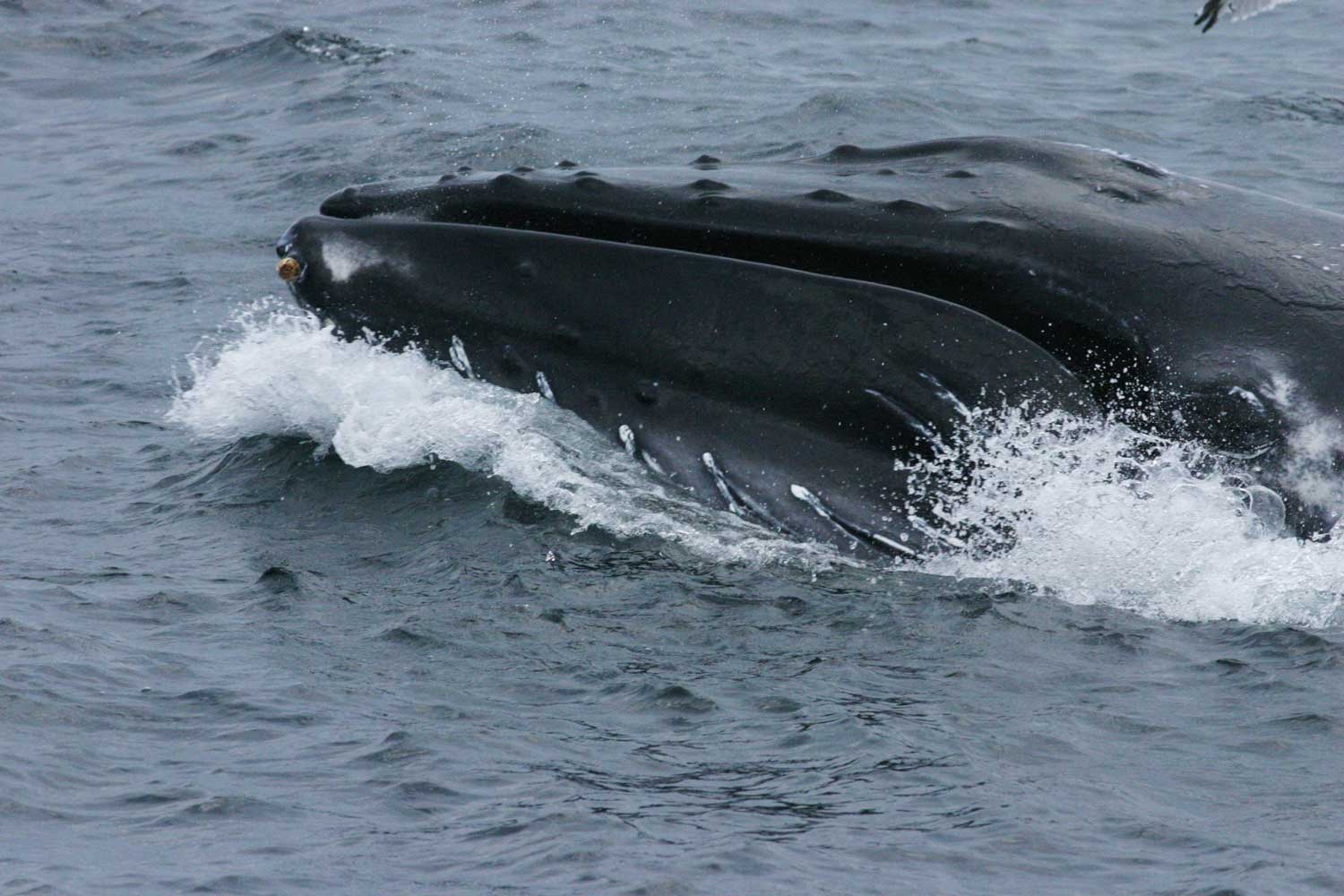
Latin: Megaptera novaeangliae
Gaelic: Muc-mhara chrotach
CETACEAN FACTFILE:
Months: January – December
Length: Up to 17 metres
Range: Global distribution, absent from the Arctic Ocean
Threats: Entanglement in fishing gear, pollution, ship strikes
Diet: Fish and krill
PHYSICAL DESCRIPTION
Humpback whales are easy to distinguish from other baleen whales due to their distinctive appearance. The head has a number of knobbly tubercles, which are enlarged hair follicles. The body is predominantly black with white patches on the underside. The fluke can measure up to five metres across and the colouration and serrated trailing edge, is unique to each animal, which enables individuals to be identified. The dorsal fin is small and hooked, located far down the back on the hump, and is often scarred. Their mostly white pectoral fins are long and narrow (Megaptera means “great wing”) and may be as much as long five metres.Their blow is described as ‘bushy’ and can be as tall as four metres. Fourteen to twenty-two white ventral pleats extend from the lower jaw to mid-way down the belly. When fully grown, humpback whales can measure up to 17 metres and weigh 40,000 kg, with females normally slightly larger than males.
BEHAVIOUR
The behaviour of humpback whales varies according to the season. During breeding periods in the tropics, humpback whales do not feed and survive on fat (blubber) reserves. Male whales sing long, complex songs during the breeding season, presumably to attract females and warn off rival males. These songs are known to vary between populations and change over time. Competition between males can become aggressive and may involve lunges, charges and tail swipes. Humpback whales are normally seen as solitary individuals or in small groups of up to seven animals, and long-term associations are rare. In general, humpback whales are well-known for their energetic displays of breaching and lobtailing, although the reason for these behaviours is not fully understood. They can dive for up to 40 minutes and raise their tail fluke when making a deep dive. Humpback whales can also be very inquisitive and may approach boats where they will spy-hop and slap their pectoral fins on the water.
HABITAT AND DISTRIBUTION
Humpback whales are widely distributed throughout all oceans of the world. They travel thousands of miles from warm-water breeding grounds in the tropics to the cold-water feeding grounds in the polar regions. They favour inshore waters and continental shelf areas, but will travel through open water during their migration. Humpback whales are occasionally encountered in the Hebrides travelling between breeding grounds off Africa to feeding grounds around Iceland and Norway.
FOOD AND FORAGING
Humpback whales are thought to feed mainly on krill, herring and cod when in British waters. Their prey is filtered from the water by stiff baleen plates inside the mouth, and swallowed whole. Whales may forage alone, or in groups. Humpbacks have developed a sophisticated technique known as ‘bubble-netting’ where the whales produce a ring of bubbles to drive the fish together and push them up towards the surface where they can be caught in huge gulp. The fish appear disorientated and unwilling to swim through the bubbles.
STATUS AND CONSERVATION
Historically, humpback whales were targeted by commercial whalers and the global population was severely depleted. Today, humpback whales face a range of threats including collisions with vessels, entanglement in fishing gear, pollution and reduction in prey stocks. In the UK, sightings are rare although there is evidence that the North Atlantic population has recovered somewhat since the whaling moratorium was established in 1982.

